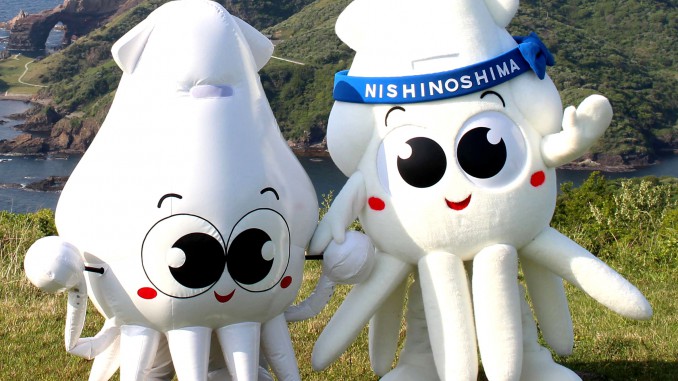
Oki Islands Trivia
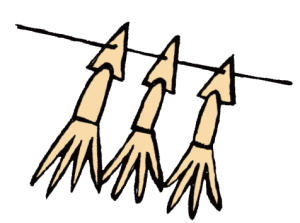 The Oki Islands were formed by volcanic activity 5,000,000 – 6,000,000 years ago. There is NO volcanic activity in the islands today, so do not worry.
The Oki Islands were formed by volcanic activity 5,000,000 – 6,000,000 years ago. There is NO volcanic activity in the islands today, so do not worry.
The first people on this land came in search of high quality obsidian – which can be found in Dōgo Island. Archeological digs around Japan have discovered obsidian (used for tools and arrowheads) from Oki which dates back at least 30,000 years.
There are four inhabited islands and 180 smaller uninhabited islands and islets in the Oki Islands area.
There are no monkeys, bears, wild pigs etc. on the islands…but there are about 2000 tanuki (raccoon dogs) in Chiburijima Island. The mayor was given a pair many years ago…they escaped…now the island is a paradise for tanuki.
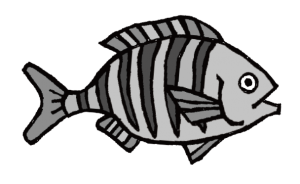 The Oki Islands are part of the Daisen-National Park. Much of the Kuniga Coast is protected by the National Park laws since 1963.
The Oki Islands are part of the Daisen-National Park. Much of the Kuniga Coast is protected by the National Park laws since 1963.
The Oki Islands became part of the UNESCO Global Geoparks Network (GGN) in 2013 at the GGN International Conference held in Jeju Island, Korea.
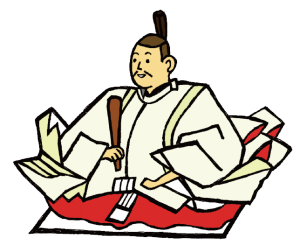 Two emperors (Emperor Godaigo and Emperor Gotoba) were exiled to Oki… and one escaped!
Two emperors (Emperor Godaigo and Emperor Gotoba) were exiled to Oki… and one escaped!
Trading ships known as Kitamae-bune traveled around Japan, bringing with them many new supplies, ways of thinking, music and folklore from around Japan. Much of this music and dance remains a big part of Oki life today.
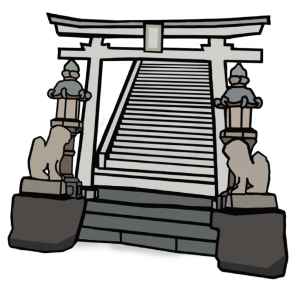 Many temples in Oki were destroyed during the Meiji Restoration through a movement known as “haibutsu-kishaku” (literally “abolish Buddhism and destroy Shākyamuni”) as the central government had a desire to distinguish between foreign Buddhism and purely Japanese Shintō. Some have since been rebuilt in a more simple style or reborn as Shintō shrines.
Many temples in Oki were destroyed during the Meiji Restoration through a movement known as “haibutsu-kishaku” (literally “abolish Buddhism and destroy Shākyamuni”) as the central government had a desire to distinguish between foreign Buddhism and purely Japanese Shintō. Some have since been rebuilt in a more simple style or reborn as Shintō shrines.
There are more than six local dialects in the Oki Islands! Try and learn some local words during your stay.
In 1868 the Oki Islands broke away from mainland Japan by staging a rebellion. This defiant moment in history lasted for 80 days and ended peacefully. Is this Japan? Yes it is, but for 80 days it was not!
Oki (Dōgo Island) is home to the Oki Salamander, featured on the international endangered species list.
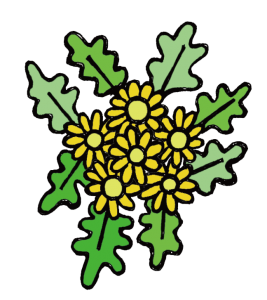 You can find an abundance of interesting flora and fauna in the sea and on land – ask a geopark guide to tell you about the ecosystem here.
You can find an abundance of interesting flora and fauna in the sea and on land – ask a geopark guide to tell you about the ecosystem here.
The Oki Islands is a popular place to make television programmes and movies. In recent years “Watashi-wa-kai-ni-naritai” (famous movie in Japan featuring actor Nakai Masahiro and actress Nakama Yukie), “Konshin” (a traditional sumo movie made by local director Nishikori) and most recently “Kokoro” (produced by Belgian, French and Canadian staff) in 2015.
There are NO convenience stores – is this really Japan? Yes it is!
Nishinoshima Island Trivia
 There are just 3000 people living in Nishinoshima, with around 40% of the population over the age of 65.
There are just 3000 people living in Nishinoshima, with around 40% of the population over the age of 65.
There are around 50 horses in Nishinoshima. They are not wild, but wild at heart maybe as they graze on the farmland around the island. They do have owners who feed them grass and check on their well-being from time to time. You cannot ride these horses. Do not go too close to the horses – they are not tame.
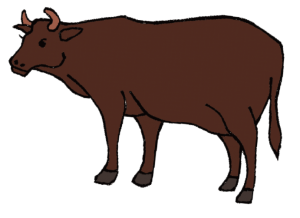 There are around 600 cows on the island, all of which are female! Farming (meat) is a major industry here, with local farmers breeding calves to be sent to the mainland…maybe even becoming Kōbe Beef in the future! Do not go too close to the cows – they are not tame and they do have horns. They may walk on the road along the coast. They are bigger than you, so wait and let them move before you do.
There are around 600 cows on the island, all of which are female! Farming (meat) is a major industry here, with local farmers breeding calves to be sent to the mainland…maybe even becoming Kōbe Beef in the future! Do not go too close to the cows – they are not tame and they do have horns. They may walk on the road along the coast. They are bigger than you, so wait and let them move before you do.
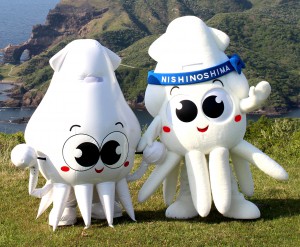 The town mascot is called “Katsu-ika-Kacchan” or “Kacchan” for short. She is a squid – this island is famous for squid fishing! There is even a business that send live squid off the island to be served at fancy restaurants in big cities such as Ōsaka.
The town mascot is called “Katsu-ika-Kacchan” or “Kacchan” for short. She is a squid – this island is famous for squid fishing! There is even a business that send live squid off the island to be served at fancy restaurants in big cities such as Ōsaka.
 The oldest shrine building in the Oki Islands is here on Nishinoshima – Takuhi Shrine. This is a “power spot” of the island and has a long and interesting history. Sailors have long visited this shrine to pray for safety at sea.
The oldest shrine building in the Oki Islands is here on Nishinoshima – Takuhi Shrine. This is a “power spot” of the island and has a long and interesting history. Sailors have long visited this shrine to pray for safety at sea.
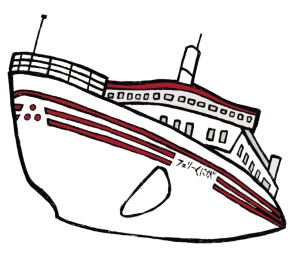 The Oki Kisen Ferry Company was started by Sakaru MATSUURA, priest of Takuhi Shrine. He used shrine funds to purchase a second-hand steamship from England and ran a scheduled voyage from Oki to Sakaiminato. The company celebrated its 120th anniversary in 2015.
The Oki Kisen Ferry Company was started by Sakaru MATSUURA, priest of Takuhi Shrine. He used shrine funds to purchase a second-hand steamship from England and ran a scheduled voyage from Oki to Sakaiminato. The company celebrated its 120th anniversary in 2015.
Matengai Cliff is one of the highest sea cliffs in Japan (257m). If you convert this into floors, when you stand on the top you are 70 floors up.
Nishinoshima was used as a look-out post during World War 2.
There is another island called “Nishinoshima” but the kanji (Chinese characters) are different. This island is 西ノ島. The other island is 西之島and is the newest island in Japan. It is a very active volcano! Nobody lives there. Don’t panic! This island is very safe and has no volcanic activity.
There are two pre-schools, one elementary school and one junior high school on the island. High school students take the inter-island ferry to Ama Town (Nakanoshima Island) every day.
 Nishinoshima has the largest spirit boats (used during the Obon Festival) in all of Japan.
Nishinoshima has the largest spirit boats (used during the Obon Festival) in all of Japan.
Nishinoshima holds the record for the largest flatfish (hirame) caught in Japan. It was 103cm and was caught by local fishermen at Uragō Port in 2008.
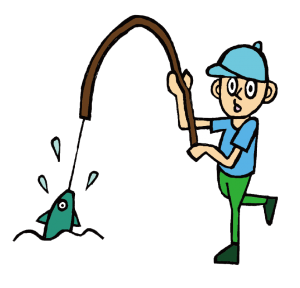 Around 200 years ago eight sailors from the Korean Peninsula were shipwrecked at the bottom of Matengai Cliff on the Kuniga Coast. One brave man climbed up the crack near the cliff and walked to the nearest temple to get help. One very brave local agreed to help rescue the men. He was lowered down on a long rope (made by the local fishermen) and carried each sailor up one at a time…until he rescued all seven men. They spent some time in Nishinoshima recovering and then were able to travel safely back to the Korean Peninsula.
Around 200 years ago eight sailors from the Korean Peninsula were shipwrecked at the bottom of Matengai Cliff on the Kuniga Coast. One brave man climbed up the crack near the cliff and walked to the nearest temple to get help. One very brave local agreed to help rescue the men. He was lowered down on a long rope (made by the local fishermen) and carried each sailor up one at a time…until he rescued all seven men. They spent some time in Nishinoshima recovering and then were able to travel safely back to the Korean Peninsula.
There are graves in Nishinoshima for Russian soldiers whose bodies floated ashore during the Russian-Japanese war more than 100 years ago. Local people took the body, gave the fallen soldier a funeral and made a grave for him. Every year people from Russia come to Nishinoshima to pay their respects to these unknown soldiers and to give thanks to the local people for their kind deed.
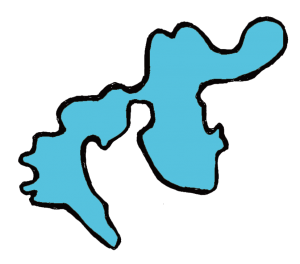 Many people in Nishinoshima are very proud of their island… but they don’t like to be known as someone from “Oki”, they want to have their own identity. Of course, they are very friendly and welcoming, so enjoy Nishinoshima life!
Many people in Nishinoshima are very proud of their island… but they don’t like to be known as someone from “Oki”, they want to have their own identity. Of course, they are very friendly and welcoming, so enjoy Nishinoshima life!
